LAST UPDATED: May 12th, 2022
Spring turkey season is winding down. Have you punched your tag yet?
It was a turkey day from Heaven. Dew coated the green grass as the eastern sunrise cut through the hazy fog, not so much as a gentle breeze to be felt. It was late in May, and my 2018 Wisconsin spring-turkey season was growing old. I’d already tagged three birds, but still had two tags in my pocket.
Then gobbling shattered the stillness. I practically giggled knowing that everything was happening on cue. You see, for three straight mornings, a gobbler that seemed to be roosting far away had been displaying at 6 to 7 a.m. right where I parked my blind and decoys.
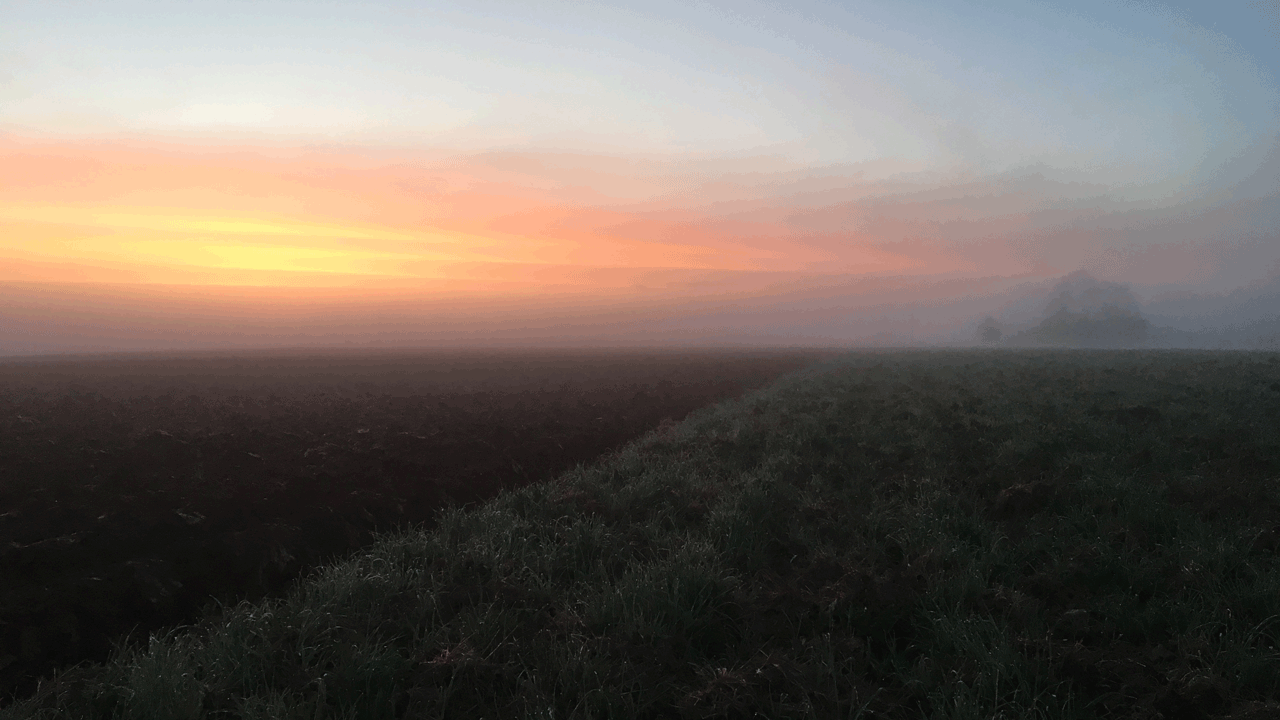
Weather-wise, late May can be the most enjoyable time to hunt. This was the morning when the author took the tom mentioned in the beginning of the article. (Photo by Darron McDougal)
Soon, he ghosted out of the fog and strutted toward my plastics, fooled like a gullible high school freshman. Next thing I knew, he coasted into my peep sight 7 yards away. My pin settled on his fan — he was facing directly away — and I increased pressure on my trigger. My arrow struck hard, and the bird hobbled out to 32 yards and stopped. Before you could say gobble, another carbon missile hit next to the first. The sage old limb-hanger collapsed on the spot.
Time is Ticking
If you’re still packing a tag or two, your time is obviously running out. But, in my opinion, the season’s best hunting is yet to come. I say this because my fastest hunts have unfolded within days of the fat lady’s anthem.
Of course, my quick late-season hunts are the result of paying close attention to how gobblers act and a great deal of trial and error. Let’s discuss several tips that have treated me well as sand runs to the bottom of the hourglass.
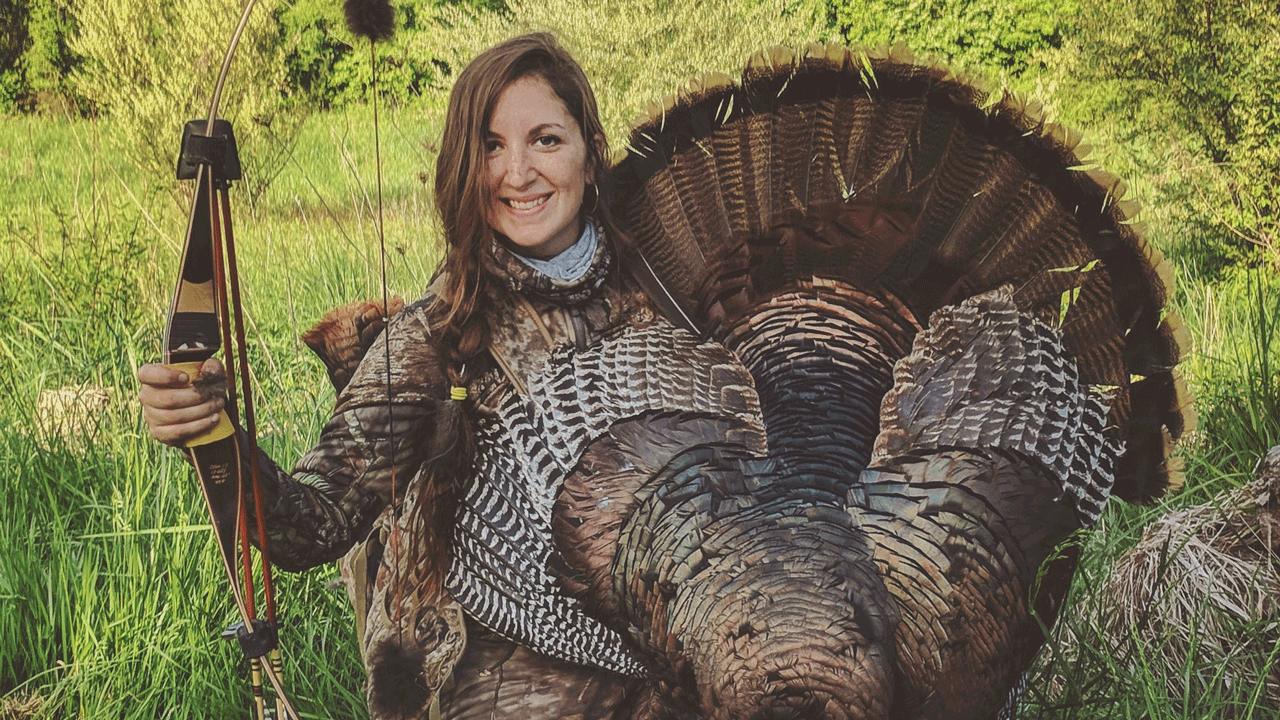
With time ticking down, Beka Garris stuck it out and killed this fine late season gobbler with her Bear recurve.
Pattern Them
Late in the season, it’s common to see solo toms displaying in prominent locations where they can be seen from hundreds of yards in all directions. Often, they’ll gobble more now than any other period of the season. These are last-ditch efforts to pull in receptive hens that haven’t yet nested.
In some cases, it takes them several mornings to score a date, so they persistently strut in the same place every morning. There are exceptions, but I’ve found this behavior to be quite common. For that reason, if you find a tom strutting in a field or clearing, he’ll likely be there again the following morning. It’s a dynamite setup location, and I prefer to use a ground blind.
In some cases, decoys are unnecessary if you’ve patterned the tom to a 20-yard radius. However, I generally still plug them in the ground to ensure the focus is off me or my blind if I’m hunting from one. I rarely call since I believe he’ll follow his pattern. I put the decoys on the highest point in the exact location where I’ve seen the tom during previous mornings and let them do the coaxing.
In many cases, if you present a convincing decoy spread, the tom will come on a string. Realistic decoys are more important now than any other time. Toms that have survived the season so far have likely seen everything, including those gosh-awful foam decoys that look more like pterodactyls than turkeys. Pitch him a realistic looking turkey decoys and you’ll give yourself the best chance to pull him in. While some folks believe using a jake decoy late in the season is risky, I’ve had great success with it.
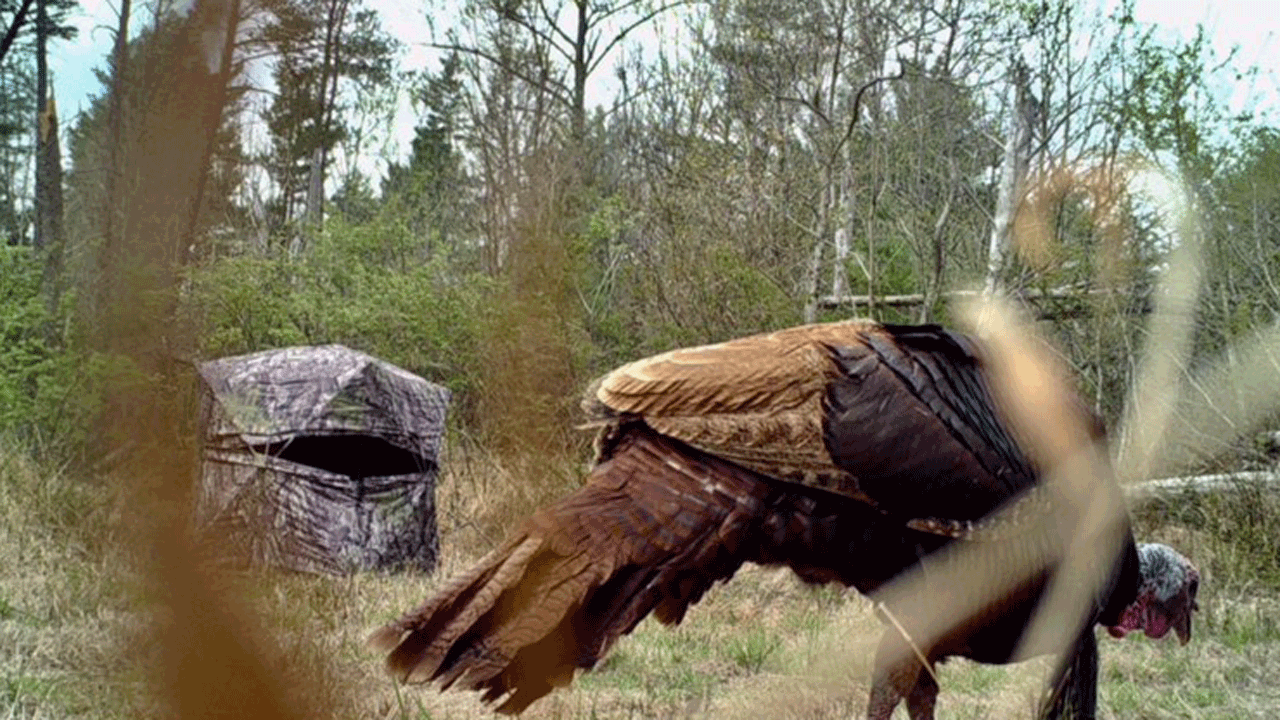
Late May usually finds gobblers strutting in prominent locations for several consecutive mornings. If you pattern a tom, getting a chance to arrow him can be as simple as slipping in there and popping up a blind.
Go Mobile
Because finding a predictable gobbler doesn’t always happen, it’s wise to have a back-up plan, my favorite being a mobile, blindless approach like shotgunners use. I find a large chunk of public ground, and then I go walking and calling.
This can work in the morning, but it can be especially effective midday since most late-season gobblers aren’t with hens by 10 a.m and on. This means that if you’re any good at calling and get a response, your percentage of calling that tom in is relatively high.
The best part about hunting without a blind is that now the forest canopy is all greened up, which equals more places to hide. When a bird gobbles within 150 yards, it’s usually best to setup ASAP in case he’s on his way. In other words, you have little time to contemplate where to sit. Find some cover that doesn’t impede your ability to strike to your decoys, and then sit absolutely still until it’s time to draw back.
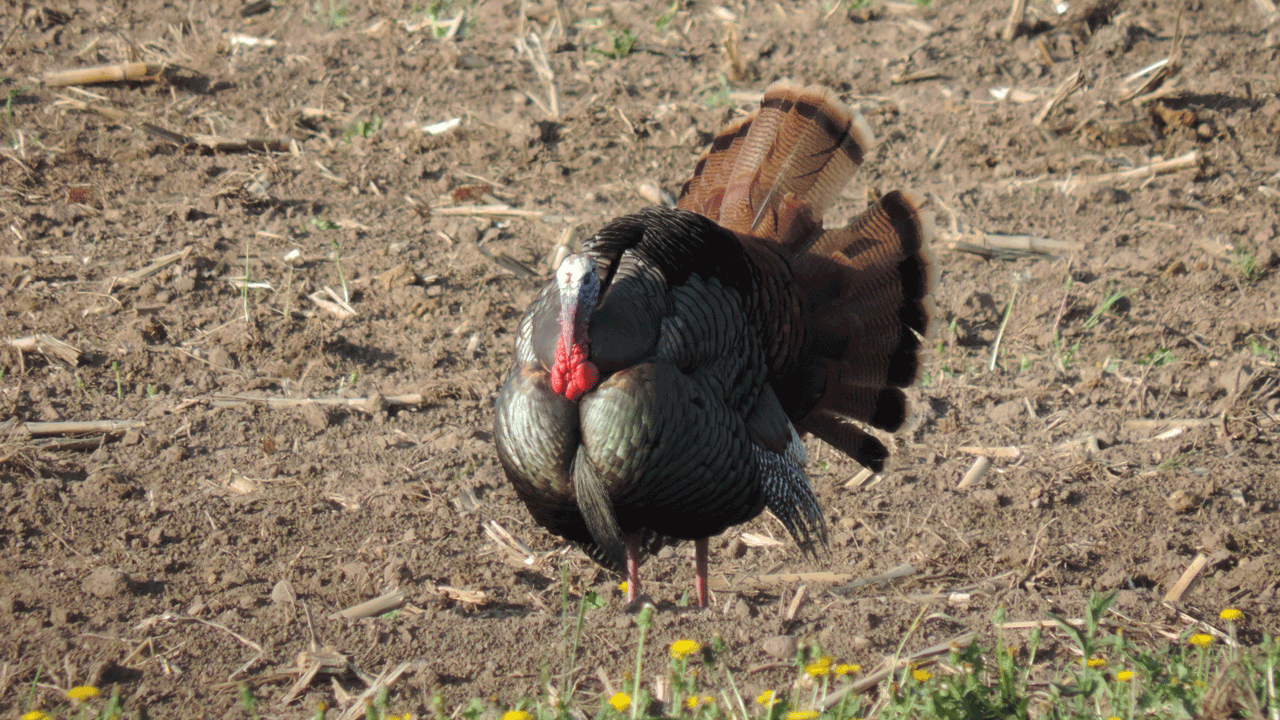
There will be times when ditching the blind and going mobile to get in front of your bird is the right move to make.
Go Private
While I’ve had my share of success using the mobile approach we just discussed, I can’t count how many late-season trips into heavily-hunted public parcels have turned up empty for me. The forest has been pounded for more than 4-5 weeks, and turkeys often relocate to private land. That’s exactly why I don’t limit myself to one property. A leading reason I’m so successful during late-season is that I hunt where gobblers are.
I almost never get turned down by landowners when I ask for turkey-hunting permission. So, I drive around until I find a gobbler in a killable location, then I contact the landowner. For efficiency’s sake, I usually make a phone call and immediately offer to appear in person so the landowner can meet me. Most say it’s unnecessary and just give the green light.
If you don’t already have one, download an app like onX or ScoutLook that has land-ownership layers. This will help you match pieces of ground that have turkeys with the respective landowners. This simplifies things so much. Nowadays, the house down the road isn’t always where the landowner lives. Properties are constantly being divided up and sold. Do yourself a favor and get the app.
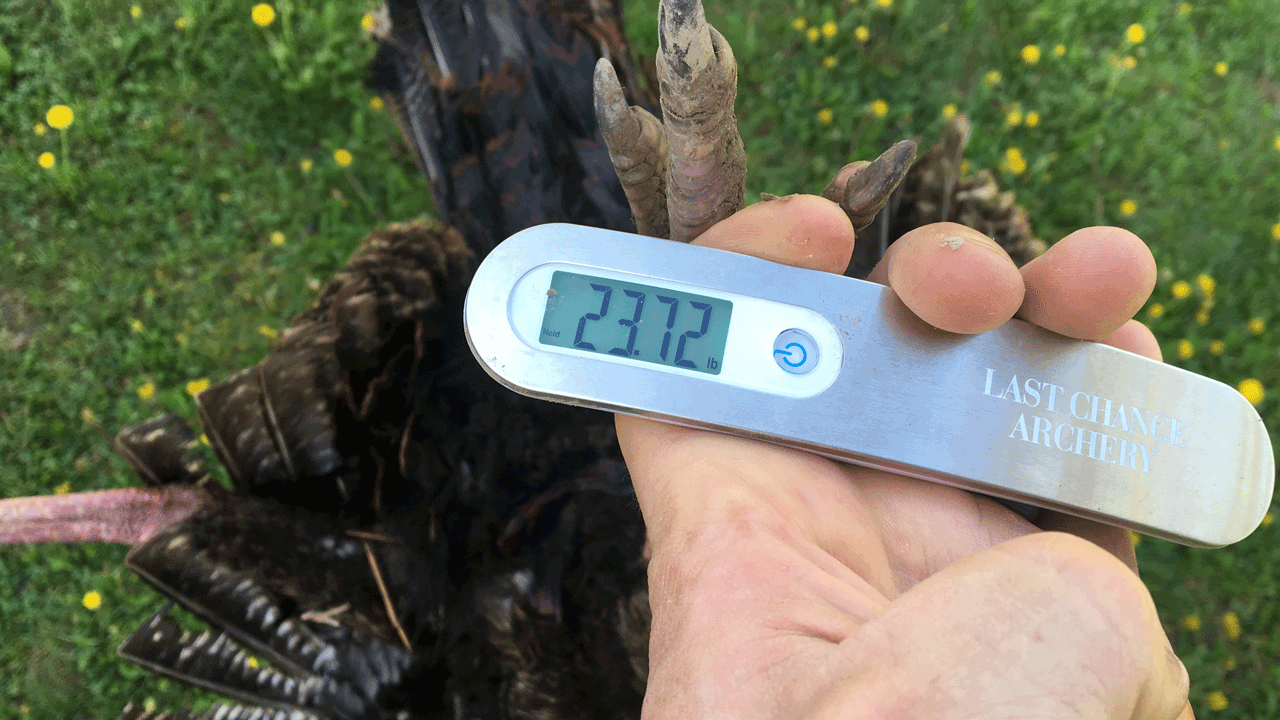
The author has bagged some of his biggest birds to date in the late season by using the tactics mentioned here. (Photo by Becca McDougal)
Lower Your Standards and Settle for a Jake
Although nothing satisfies like a plump gobbler, sometimes filling that late-season tag is a matter of dropping your standards and just having fun. Packs of jakes always seem to be roving around, and when they wander into bow range, the temptation can be overwhelming for a bowhunter.
I don’t make a regular business of shooting jakes. I pass them 90 percent of the time. But, every once in a while, things just feel right and I bring my string to full draw. I did this in 2017 when nine jakes spent 20 minutes in the decoys. I saw it as an opportunity for executing a perfect shot to build my confidence for the coming fall seasons, plus jake meat is outstanding. Obviously, eight jakes left the scene.
If you want a little extra poultry in the freezer instead of tag soup, a jake might be just what the doctor ordered.
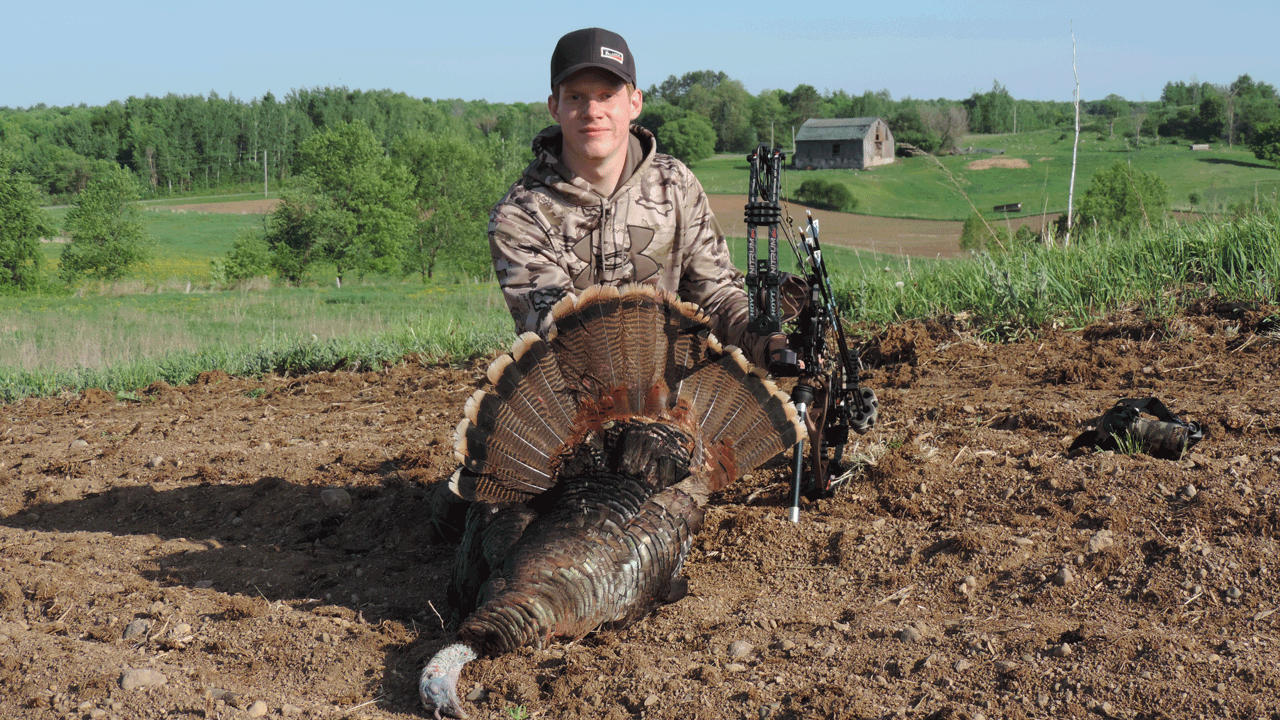
Want to fill your tag? Beggars can’t be choosers! Consider dropping your standards and shooting a jake like Marcus McDougal did when time was running out on his 2018 season. (Photo by Darron McDougal)
How to Kill a Late Season Turkey – Conclusion
It’s never a guarantee, since every bird and situation are different, but the tips I’ve outlined have been my aces in the hole countless times throughout the years. I’ve tagged heaps of late-season birds, plus I’ve helped others get their late-season birds with setup and calling assistance.

 By
By 



